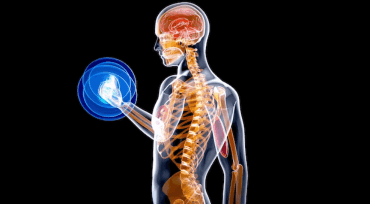Question
a.
is the total number of energy dots regardless of color in the i th row and i th column of the energy dot plot
b.
is the total number of energy dots considering the color in the ith row and ith column of the energy dot plot
c.
represents in an unfiltered dot plot
d.
represents the number of base pairs
Posted under Bioinformatics
Interact with the Community - Share Your Thoughts
Uncertain About the Answer? Seek Clarification Here.
Understand the Explanation? Include it Here.
Q. Three scores, Pnum (i), Hnum (i,j), and Ssum, have been derived to assist with a determination of the reliability of a secondary structure prediction for a particular base i or a...
Similar Questions
Explore Relevant Multiple Choice Questions (MCQs)
Q. Three scores, Pnum (i), Hnum (i,j), and Ssum, have been derived to assist with a determination of the reliability of a secondary structure prediction for a particular base i or a base pair i,j. Which of the following is not a correct regarding Hnum?
View solution
Q. Three scores, Pnum (i), Hnum (i,j), and Ssum, have been derived to assist with a determination of the reliability of a secondary structure prediction for a particular base i or a base pair i,j. Which of the following is not a correct regarding Ssum?
View solution
Q. A limitation of the Zuker method and other methods (Nakaya et al. 1995) for computing suboptimal RNA structures is that they do not compute all the structures within a given energy range of the minimum free-energy structure.
View solution
Q. These limitations of the Zuker method and other methods have been largely overcome by using an algorithm originally described by Waterman and Byers (1985) for finding sequence alignments within a certain range of the optimal one by modifications of the trace-back procedure used in dynamic programming.
View solution
Q. ______ molecules can simply be identified based on their sequence similarity with already-known sequences.
View solution
Q. One of the first methods used to find tRNA genes was to search for sequences that are complementary and can fold into a knot like the three found in tRNAs.
View solution
Q. Fichant and Burks (1991) described a program, tRNAscan, that searches a genomic sequence with a sliding window searching simultaneously for matches to a set of invariant bases and conserved self-complementary regions in tRNAs with an accuracy of 97.5%.
View solution
Q. The probabilistic model was used to identify small nucleolar (sno) RNAs in the yeast genome that methylate ribosomal RNA.
View solution
Q. The probability model mentioned above was a hybrid combination of HMMs and SCFGs trained on sno RNAs.
View solution
Q. Which of the following is untrue regarding RNA structure?
View solution
Q. Which of the following is untrue about Vienna RNA Websuite?
View solution
Q. Which of the following is untrue about the Sfold algorithm?
View solution
Q. If the centroid structure is different from the minimum free-energy structure, the centroid structure is often closer to the phylogenetic prediction and contains fewer base pairs, or fewer false-positive base pair predictions, than the minimum free-energy prediction.
View solution
Q. The ILM program uses an iterative loop matching algorithm to maximize base pairs and allows pseudoknots to form by allowing base. pairs to be added or removed in successive rounds.
View solution
Recommended Subjects
Are you eager to expand your knowledge beyond Bioinformatics? We've handpicked a range of related categories that you might find intriguing.
Click on the categories below to discover a wealth of MCQs and enrich your understanding of various subjects. Happy exploring!








